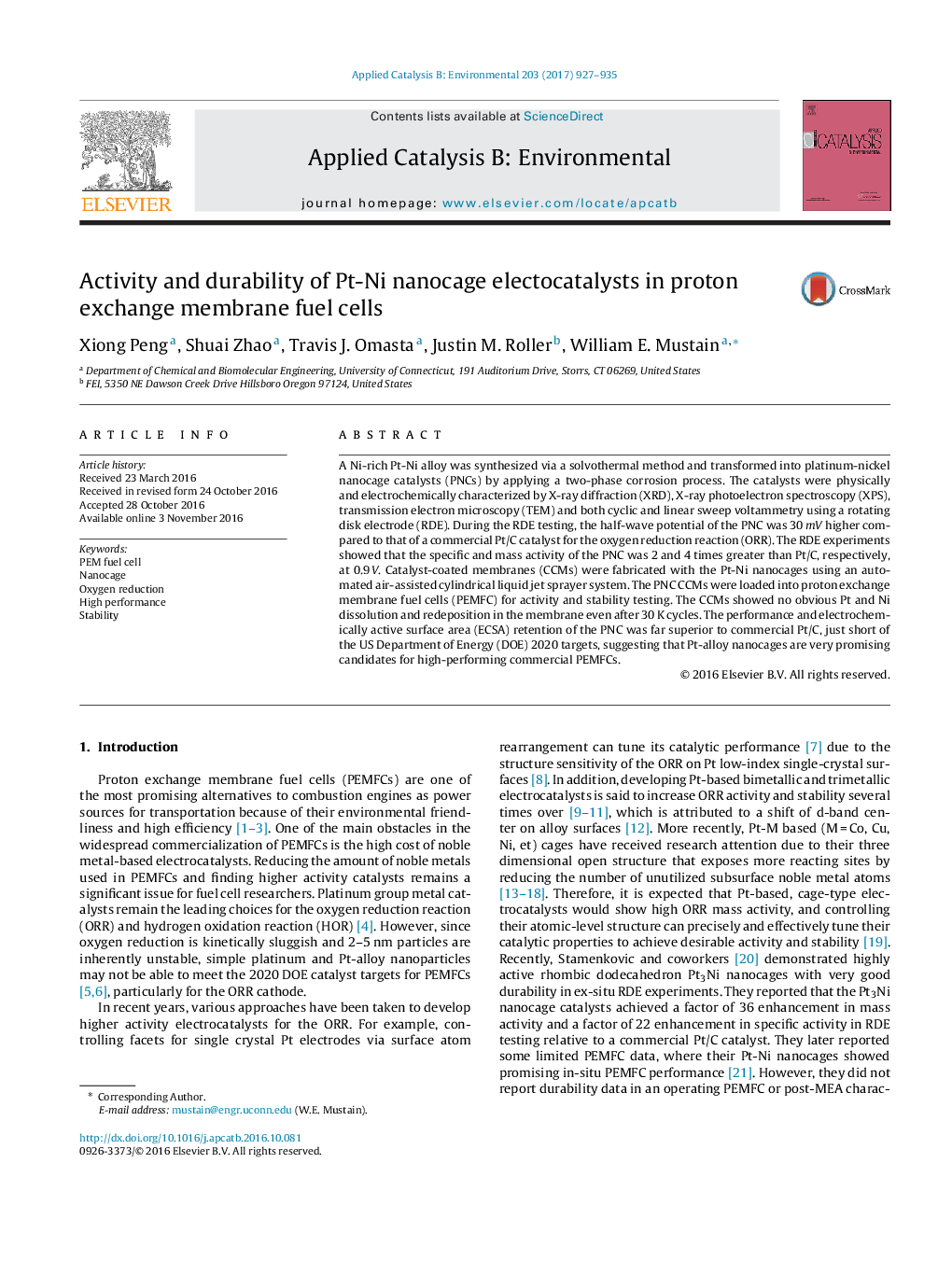| Article ID | Journal | Published Year | Pages | File Type |
|---|---|---|---|---|
| 6454618 | Applied Catalysis B: Environmental | 2017 | 9 Pages |
•Pt-Ni nanocages were investigated as catalysts for PEM fuel cells.•Pt-Ni nanocages showed higher ex-situ and in-situ ORR activity than commercial Pt/C.•Pt-Ni nanocages were highly stable in the ORR environment, not prone to dissolution.•Pt-Ni nanocage stability and activity were both significantly superior to Pt/C.
A Ni-rich Pt-Ni alloy was synthesized via a solvothermal method and transformed into platinum-nickel nanocage catalysts (PNCs) by applying a two-phase corrosion process. The catalysts were physically and electrochemically characterized by X-ray diffraction (XRD), X-ray photoelectron spectroscopy (XPS), transmission electron microscopy (TEM) and both cyclic and linear sweep voltammetry using a rotating disk electrode (RDE). During the RDE testing, the half-wave potential of the PNC was 30 mV higher compared to that of a commercial Pt/C catalyst for the oxygen reduction reaction (ORR). The RDE experiments showed that the specific and mass activity of the PNC was 2 and 4 times greater than Pt/C, respectively, at 0.9 V. Catalyst-coated membranes (CCMs) were fabricated with the Pt-Ni nanocages using an automated air-assisted cylindrical liquid jet sprayer system. The PNC CCMs were loaded into proton exchange membrane fuel cells (PEMFC) for activity and stability testing. The CCMs showed no obvious Pt and Ni dissolution and redeposition in the membrane even after 30 K cycles. The performance and electrochemically active surface area (ECSA) retention of the PNC was far superior to commercial Pt/C, just short of the US Department of Energy (DOE) 2020 targets, suggesting that Pt-alloy nanocages are very promising candidates for high-performing commercial PEMFCs.
Graphical abstractFigure optionsDownload full-size imageDownload high-quality image (167 K)Download as PowerPoint slide
